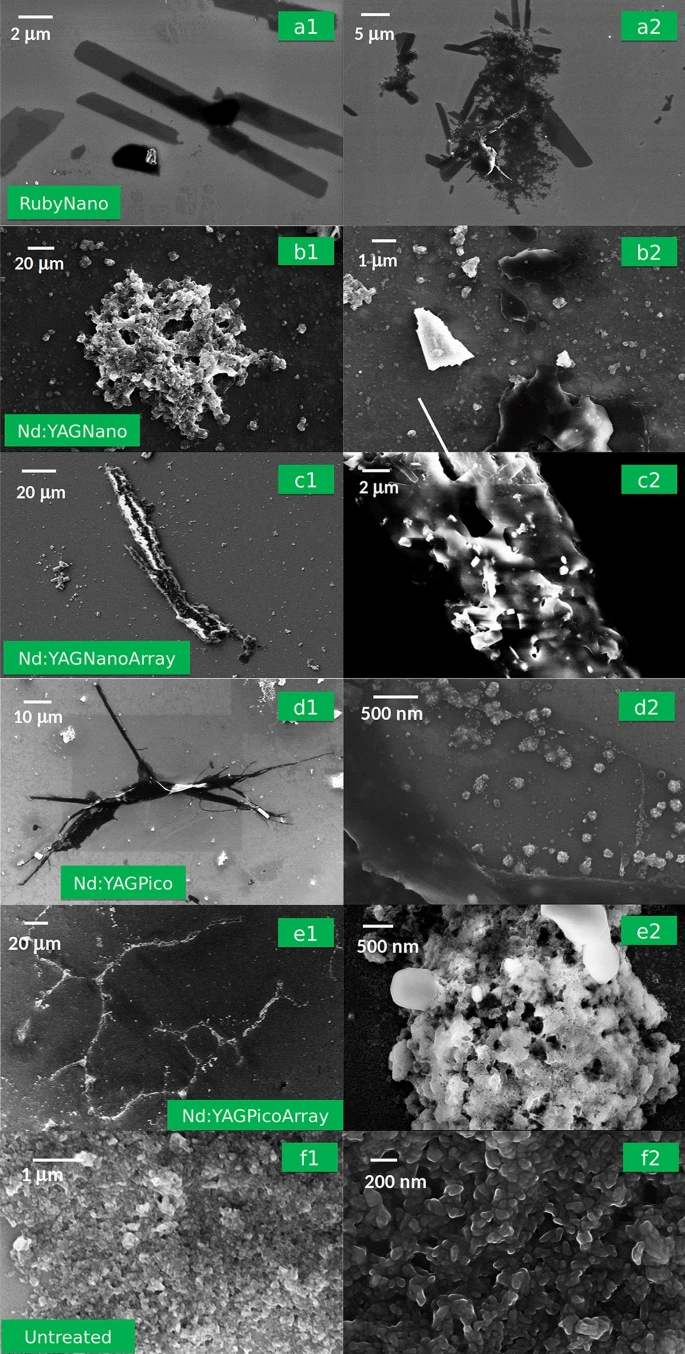Is Tattoo Revomal Expecto To Improve
In an commodity recently published in Scientific Reports, researchers explored the removal of permanent tattoos and compared nano and picosecond laser treatments.

Study: Comparative treatments of a green tattoo ink with Reddish, Nd:YAG nano- and picosecond lasers in normal and array fashion. Paradigm Credit: damiangretka/Shutterstock.com
Tattoo Industry – Leaving a Mark
In the United States, tattoo businesses are thriving and show no signs of declining. Increased popularity has meant that body ink has become considerably more widespread.
However, a noticeable pct of people report some levels of regret following their tattoos, such as feeling like the tattoo does non fit their current personality or it losing its pregnant. In these cases, people either go for a tattoo encompass upward or consummate removal.
Laser Handling – A Ray of Hope
Due to the global growth of tattooing, tattoo erasure has too grown in popularity. Laser treatments are effective for undesired tattoos, with the virtually common method involving laser treatment. However, some colors, such every bit green, are deemed "recalcitrant" to the therapy.
The tattooed pigment is held in the peel's lowest layer. Ink particles are introduced with needles into varied thicknesses of the bottom layer when tattoos are placed.
Essentially, lasers erase tattoos past using a high-intensity laser beam to interruption apart the pigment hues. All laser wavelengths are absorbed past black tattoo ink, rendering it the simplest color to ready.
How Do These Lasers Work?
The relatively shallow coatings of ink are erased first, followed by the deeper levels. Multiple treatment options are available to penetrate all of the varied levels of pigment in a tattoo.
When compared to shading tattoos with a bottom density of ink, a tattoo that is very black or bold will demand additional procedures to remove the pigment.
Other colors could only be treated with certain lasers, which are determined past the paint color. The strength of the laser beam is peachy enough to fracture the ink since information technology is then fleeting. However, since the energy is only in the skin for a brief fourth dimension, there is little risk of skin impairment.

Figure 1.UV–Vis spectra of the GC ink dispersion upon laser treatments: ruby-red solid line = nanosecond ruby light amplification by stimulated emission of radiation, violet solid line = nanosecond Nd:YAG, violet dashed line = nanosecond Nd:YAG with array, low-cal blue solid line = picosecond Nd:YAG, light bluish dashed line = picosecond Nd:YAG with array. In the inset, the same set of spectra is plotted forth with the non-treated sample, reported with a green solid line. Cecchetti, D., Bauer, Eastward., Guerriero, E., et al. (2022).
The success of tattoo removal is typically color dependent, and information technology is measured past contrasting the discoloration of the inked skin following the initial treatments.
Several types of lasers, including alexandrite, Carmine & Nd:YAG (neodymium-doped yttrium aluminum garnet) lasers, have been reported to effectively erase black tattoos; although green tattoo designs are the near resistive.

Effigy 2.SEM images of GC ink treated with different lasers: (a1,a2) RubyNano, (b1,b2) Nd:YAGNano; (c1,c2) Nd:YAGNanoArray; (d1,d2) Nd:YAGPico; (e1,e2) Nd:YAGPicoArray, and untreated: (f1,f2). Cecchetti, D., Bauer, Eastward., Guerriero, Eastward., et al. (2022).
Important Findings of the Study
When dealing with multicolor tattoos, a common side upshot of light amplification by stimulated emission of radiation therapy is variable bleaching, which leaves residuals of various colors to varying degrees, resulting in an unattractive terminal expect.
The goal of this report was to determine the efficacy of five light amplification by stimulated emission of radiation treatments for removing a green print water dispersion. They employed Nd:YAG picosecond lasers, as well as Ruby nanosecond and Nd:YAG laser beams, which are near oftentimes used lasers in dermatological clinics for tattoo removal.
Nd:YAG pico- and nanosecond laser in array as well every bit normal style, and Ruby nanosecond lasers, while maintaining the cumulative irradiation free energy constant. The treated materials' UV–Vis spectroscopic assay shows that the Nd:YAG picosecond laser is the most active, while the Carmine nanosecond lasers are the least effective.
Future Work
Lasers may enable more than effective therapy for neurological disorders, dermatological bug, and other technical issues in clinical settings in the future.
The objective of the study is to make light amplification by stimulated emission of radiation tattoo removal procedures safer and more than constructive than present approaches. While the approach has non changed much in the previous 50 years, it may actually lower the cost and increase its accessibility to those who require it.
Reference
Cecchetti, D., Bauer, East., Guerriero, E., et al. (2022). Comparative treatments of a greenish tattoo ink with Ruby, Nd:YAG nano- and picosecond lasers in normal and assortment fashion. Scientific Reports. Available at: https://doi.org/10.1038/s41598-022-07021-w
Is Tattoo Revomal Expecto To Improve,
Source: https://www.azonano.com/news.aspx?newsID=38806
Posted by: alvaradomighose.blogspot.com


0 Response to "Is Tattoo Revomal Expecto To Improve"
Post a Comment